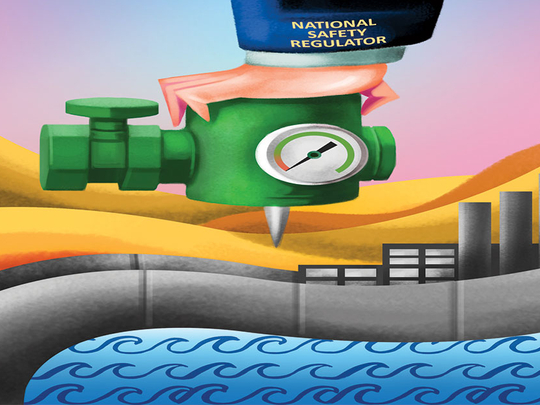
As a rapidly industrialising nation, the UAE must learn something from the factory explosion in Tianjin (China). While the dynamics are not identical, the parallel stories of rapid economic development point to a potentially dangerous concoction of incredible growth, 21st century-scale industrialisation and lag in regulatory infrastructure.
And while emergency responders and Chinese investigators work to derive conclusions as to how this explosion occurred, I believe the UAE must take positive steps to mitigate such a disaster through the introduction of an independent safety regulator.
The death toll marks this out as one of the worst industrial accidents in Chinese history. What makes matters worse is that hundreds of tonnes of highly toxic and volatile sodium cyanide — stored at a temporary storage facility at the site — leaked, making it difficult and dangerous for emergency responders and local residents.
Chinese authorities have detained 10 senior executives of the company, but the loss of life, cost of production downtime, lost confidence, and unfavourable global attention is unquantifiable. The risk of such disasters is one emerging economies cannot afford to ignore.
Like China, the scale of the UAE’s industrial development has been rapid. The Ministry of Economy estimates there are over 5,000 industrial establishments across the UAE. Jebel Ali Free Zone has now grown to more than 7,000 companies.
Against this backdrop, warehouse and factory fires in Sharjah, Dubai, and Abu Dhabi have become increasingly common. Five fire stations responded to a major fire at 11 warehouses in Dubai just last month. Ajman’s industrial area had a fire at a plastics factory, causing significant damage. And in one of the worst accidents in the UAE earlier this year, 10 people died at a local tire shop in the Musaffah area of Abu Dhabi.
What the accidents share in common is the absence of sufficient safety governance, poor planning, and inadequate organisational safety culture. Accidents occur because of lack of supervision at the operational level, especially with contractors and subcontractors.
Some organisations don’t have a mature enough governance system to embed health and safety management across all operations. Planning failures happen because workers do not understand the risks faced in handling hazardous materials or performing hazardous operations.
Poor safety culture is because workers and management don’t have the right attitudes towards risk and preventing accidents.
Despite those examples, the UAE does take health and safety seriously and is quickly building its capabilities. Abu Dhabi has the Abu Dhabi Occupational Safety and Health Centre, which regulates safety across the emirate.
Many of the country’s primary industrial companies such as DP World and Adnoc follow international best practices and standards for safety and the industrial zones that they call home do adhere to their own safety requirements. The trouble is that all of these standards are different, and with no single safety standard across the UAE and across multiple industries, consistently implementing and policing safety is a challenge.
Nationally, the National Emergency Crisis and Disasters Management Authority (NCEMA) coordinates the response of large-scale disasters, ensures that assets and resources are in place to respond quickly and effectively. It has published a business continuity standard that is being implemented around the country, across all industries and government departments.
Though first responders are usually civil defence and police, the UAE recently stood up the National Search and Rescue Centre to help coordinate the response to large-scale causality events. In addition, the UAE has started working on a national safety standard.
But what needs to be added to this ‘safety tool box’ is the development of an independent national safety regulator.
The independent regulator would ultimately be responsible for a national effort that ensures commitment and responsibility to safety in all industries. It would implement uniformity, and apply a systems approach to safety, where safety is looked at through a holistic lens across all appropriate stakeholders. The development of strong public-private sector collaboration and partnerships will also be key to demonstrating transparency and a commitment to continuous improvement.
A new UAE national safety regulator should consider three things as they design their national safety oversight programme.
The first is governance — ensuring that the government provides an oversight role that is independent from other government entities and has sufficient commitment and resources. Then comes risk management — ensuring that the regulator understands safety risks and is able to carefully balance regulations that protect the public and support sustainable economic growth.
And finally robust compliance, giving the body the power to enforce actions taken to prevent accidents and make sure that government safety rules are followed.
Despite low oil prices, the UAE continues to outperform many emerging markets thanks to a robust diversification programme. Creating an independent national safety regulator will help ensure that development is sustainable, prosperous, and safe for the country and its people.
The writer is Principal at Booz Allen Hamilton MENA.











